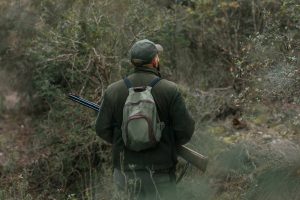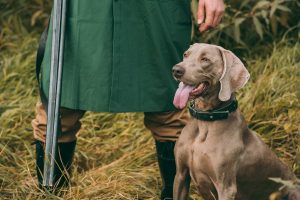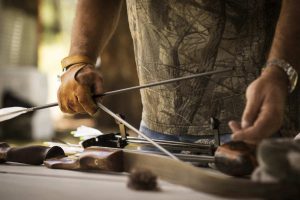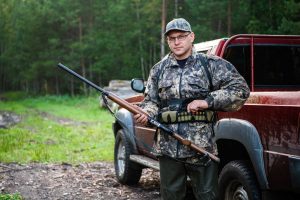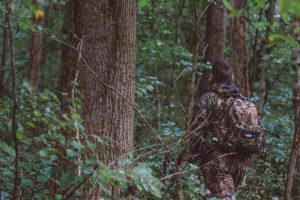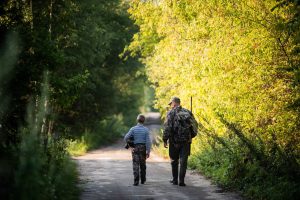Hunting is a fun and exciting activity that requires special equipment. Investing in the right gear can help increase your chances of success. This blogpost will cover the essential gear needed for hunting success. We will discuss basic items like clothes and accessories, as well as more specific items like hunting rifles, ammunition, and optics. We will also provide tips on choosing the right gear for your needs. You will learn everything you need to know to make sure you have the right equipment for your next hunting trip. With the right gear, you’ll be sure to have a successful and enjoyable experience.
Quality clothing and accessories will keep you warm and comfortable while out in nature, while proper optics and ammunition will give you an edge when tracking down game. Having the right rifle is also essential for accurate shooting. Spending money on quality items now could save you money (and frustration) later on. All these factors combine to create a successful hunting trip that is both safe and enjoyable.
Essential Clothing and Accessories
Hunting is no fun without the right clothing and accessories. It’s important to invest in quality items that are designed for outdoor activities such as hunting, fishing, or camping. The right clothes will keep you warm and dry, while the right accessories can help make your hunting trip more enjoyable. In this section of our blog post we’ll discuss essential clothing and accessories needed for successful hunting trips. We’ll cover basics like jackets and boots, as well as specialty items like hats and gloves. You’ll learn everything you need to know about choosing the perfect outfit for your next hunt!
Types of clothing
When it comes to hunting attire, there are many different types to choose from. Depending on the type of game you’re hunting and the environment you’ll be in, you may need a variety of items such as camo jackets, vests, pants and boots. It’s important to invest in quality items that will last throughout your hunts. Look for items made with durable fabrics that are designed for outdoor conditions. Additionally, make sure your clothes fit properly so they don’t interfere with your movements.
These are some of the most important pieces of clothing gear you’ll need:
- Hunting jackets: Jackets are essential for keeping you warm and dry during cold weather hunts. Look for jackets that are waterproof, insulated, and breathable.
- Hunting vests: Vests provide extra warmth while still allowing mobility so you can move freely while hunting. They also have pockets to carry items like ammunition or calls.
- Hunting pants: Hunting pants should be lightweight yet durable enough to withstand the elements such as wind and rain, as well as brambles or thorns if you’re in a wooded area.
- Hunting boots: Quality boots will help keep your feet protected from the elements and prevent fatigue from long days of walking or standing on uneven terrain. Look for waterproof boots with good traction so you won’t slip on wet ground or slick rocks!
- Hats and gloves: A good hat will keep your head warm while a pair of gloves can help you grip your rifle or bow more securely. Choose hats and gloves made with waterproof, windproof materials for maximum protection from the elements.
When choosing colors and patterns for camo gear, consider the type of environment you’ll be in – some colors work better than others depending on where you’re hunting! The various types of camo patterns and their purpose include:
- Woodland camo: This is the classic camo pattern consisting of brown and green colors, making it ideal for hunting in wooded environments.
- Desert camo: This desert-inspired pattern features shades of tan, beige, and grey that blend into sandy or rocky terrain.
- Urban/digital camo: Digital camouflage is designed to disrupt shapes so it can blend into an urban environment with lots of hard lines and angles such as city buildings or bridges.
- Snow camo: This white and blue pattern blends into snowy landscapes so you can remain hidden in winter conditions.
- Marsh/swamp camo: Designed to blend into marshy areas, this dark green and brown pattern helps hunters stay unseen in wetlands or swamps with tall grasses or cattails
When it comes to fabric types for hunting gear, look for items made with durable materials that are designed to withstand the elements. Synthetic fabrics such as nylon and polyester offer great protection from wind and rain while still being breathable so you won’t overheat. Merino wool is also a good choice, as it keeps you warm even when wet but doesn’t retain odors like some other fabrics do. Down is another popular option, providing excellent insulation on cold days without compromising mobility or comfort. Whatever fabric type you choose, make sure it’s designed specifically for outdoor activities so your clothes will last through many successful hunts!
Warm Weather Hunting Fabrics
For warm weather hunting, lightweight fabrics such as cotton or linen are great choices. These allow your skin to breathe while still providing protection from the sun and bugs. Additionally, look for moisture-wicking fabrics that will help keep you dry in hot climates. Merino wool is also a good option as it helps regulate body temperature even on the hottest days.
Cold Weather Hunting Fabrics
For cold weather hunting, look for fabrics that are insulated and waterproof. Synthetic materials such as nylon and polyester are great choices as they provide warmth without sacrificing breathability. Down is another popular option, providing excellent insulation on chilly days. For added protection from the elements, choose water-resistant materials like GORE-TEX or Polartec to keep you dry even in wet conditions.
Hats and Gloves
Hats and gloves are essential accessories for hunting success. A good hat will keep your head warm while a pair of quality gloves can help you grip your rifle or bow more securely. Look for hats made with waterproof, windproof materials that won’t become soggy in wet conditions. Fleece-lined hats offer extra insulation during cold weather hunts, while baseball caps provide sun protection on hot days. For gloves, choose lightweight yet durable items designed for outdoor activities such as hunting or fishing. Heavy duty leather or synthetic fabric is ideal to protect against thorns and brambles when walking through thick brush.
Here are a few types of hats every hunter should have in their kit:
- Baseball caps: These are great for keeping the sun out of your eyes on hot days and also provide some protection from rain or snow.
- Felt hats: Felt hats offer extra insulation during cold weather hunts and can be easily folded up to fit in a pocket when not in use.
- Hunting caps: Hunting caps typically feature a brim to keep the sun off your face, as well as camouflage patterns to blend into your environment.
- Beanies/knit hats: A good beanie is essential for cold weather hunts, providing warmth while still allowing you to move freely without feeling weighed down by heavy gear.
There are three types of gloves we recommend each hunter should own:
- Leather gloves: These are great for protecting your hands from thorns and brambles when walking through thick brush.
- Fleece-lined gloves: Fleece-lined gloves offer extra insulation during cold weather hunts, as well as a secure grip on slippery surfaces like rocks or wet ground.
- Synthetic fabric gloves: Lightweight yet durable synthetic fabric is ideal for outdoor activities such as hunting or fishing, providing protection from the elements while still allowing you to move freely without feeling weighed down by heavy gear.
Other Essential Accessories
In addition to clothing and hats, there are other essential accessories that can help make your hunting trips more successful. A good pair of binoculars or a spotting scope will allow you to monitor the area for game from a distance. You’ll also want a reliable knife for cleaning and skinning game, as well as items like flashlights and compasses to help you navigate in the dark or unfamiliar territory. Finally, don’t forget about safety items such as an emergency whistle or signaling device in case of emergencies! With these essential accessories on hand, you’ll be ready for any situation while out on the hunt.
Here is a short list (Not exhaustive) of some essential pieces of gear each hunter should own:
- Binoculars or spotting scope: These allow you to monitor the area for game from a distance, making them essential for successful hunts.
- Knife: A reliable knife is essential for cleaning and skinning game after a successful hunt.
- Flashlight: A flashlight will help you navigate in the dark or unfamiliar territory when hunting at night or in low light conditions.
- Compass/GPS device: A good quality compass can help you find your way back if you get lost while out on the hunt – make sure to bring one along!
- Emergency whistle/signaling device: Safety items such as an emergency whistle or signaling device are essential in case of emergencies so that other hunters can come to your aid if needed.
- First aid kit: A first aid kit should be a part of every hunter’s essential gear list. It’s important to have the necessary items on hand in case of an injury or medical emergency while out on the hunt.
- Camouflage netting: Camouflage netting can help you stay hidden from game and also provide protection from wind, sun, and rain if needed.
- Calls/Decoys: Calls and decoys can be used to attract game towards your hunting area, making them useful for more successful hunts!
Hunting Rifles
Hunting rifles are an essential piece of equipment for successful hunting trips. Investing in the right rifle can make all the difference when it comes to accuracy, range, and precision. In this section of our blog post we’ll discuss different types of hunting rifles and how to choose one that best fits your needs. We’ll cover everything from bolt-action to semi-automatic styles and even air guns so you can find the perfect gun for your next hunt! With a little bit of research, you’ll be sure to find the perfect rifle for all your hunting needs.
Types of Hunting Rifles
Hunting rifles come in a variety of styles and can be used for different types of game. Bolt-action rifles are the most popular choice, as they offer increased accuracy with minimal recoil. Semi-automatic rifles allow for faster follow-up shots but require more maintenance than bolt action guns. Lever action and pump action models offer an old-school feel but require manual cycling each time you fire a shot. Air guns provide quiet, low impact shooting that is ideal for small game or target practice. Finally, break barrel shotguns are great all purpose firearms that have less recoil than other shotgun styles while still providing enough power to take down larger game such as deer or bear.
These are some of the most popular rifle types and common uses:
- Bolt-action rifles: These offer increased accuracy with minimal recoil, making them ideal for shooting at long distances or smaller game such as birds or rabbits.
- Semi-automatic rifles: These are great for faster follow up shots and can be used for larger game such as deer or bear.
- Lever action and pump action rifles: These styles provide an old-school feel while still being powerful enough to take down larger game.
- Air guns: Air guns provide quiet, low impact shooting that is perfect for small game hunting or target practice without the need of a gun license in some states.
- Break barrel shotguns: These are great all purpose firearms that have less recoil than other shotgun styles while still providing enough power to take down large animals like deer or bear when needed
Choosing the right rifle for your needs
When choosing a hunting rifle, it’s important to consider your needs and the type of game you’ll be hunting. Make sure you select a gun that is powerful enough for the size of game you plan to hunt while still being lightweight enough so it doesn’t become cumbersome when out in the field. Additionally, choose a rifle with accurate sights or optics that will help increase your chances of success when shooting at long distances or small targets. Finally, make sure to practice with your chosen firearm before heading out on any hunts so you can get comfortable and familiar with its functions.
Here are a few factors to consider when choosing your rifle:
- Power: Make sure you select a gun that is powerful enough for the size of game you plan to hunt while still being lightweight enough so it doesn’t become cumbersome when out in the field.
- Accuracy: Choose a rifle with accurate sights or optics that will help increase your chances of success when shooting at long distances or small targets.
- Comfort/Ergonomics: Look for a rifle with an ergonomic design that fits well in your hands and allows for easy maneuvering while aiming and firing shots.
- Maintenance: Consider how much maintenance is required for the type of firearm you choose, as some models may require more frequent cleaning or upkeep than others depending on use and environment.
- Price: Factor in price point as well – there are many quality firearms available at various price points so make sure you get the best bang for your buck!
Ammunition
In addition to a quality rifle, ammunition is an essential part of successful hunting trips. Investing in the right ammo can make all the difference when it comes to accuracy and range. In this section of our blog post we’ll discuss different types of ammunition and how to choose one that best fits your needs. We’ll cover everything from shotgun shells to centerfire cartridges so you can find the perfect round for your next hunt! With a little bit of research, you’ll be sure to find the ideal ammo for all your hunting needs.
Choosing the right ammunition for your rifle is essential for successful hunting trips. Make sure to select a round that is powerful enough for the size of game you plan to hunt while still being accurate and consistent when fired from your firearm. Additionally, choose an ammo type that provides minimal recoil so you can shoot with ease without feeling weighed down by heavy gear. Lastly, factor in cost – there are many quality rounds available at various price points so make sure you get the most bang for your buck!
Rifle Optics
Optics are an important piece of hunting equipment, helping you scout and monitor the area for game from a distance. Investing in quality optics can make all the difference when it comes to accuracy and range. In this section of our blog post we’ll discuss different types of optics and how to choose one that best fits your needs. We’ll cover everything from binoculars to scopes so you can find the perfect optic for your next hunt! With a little bit of research, you’ll be sure to find the ideal viewing device for all your hunting needs.
Popular Types of Rifle Optics
There are many different types of optics available depending on what type of game you’re hunting and how far away it is located. Binoculars are great for scouting out distant objects as they provide magnification without taking up too much space or weight in your bag. Spotting scopes offer more powerful magnification but require a tripod or stand due to their size and weight, making them better suited for stationary use such as glassing high ridges or mountainsides from afar. Rangefinders allow hunters to quickly measure distances between themselves and their target – essential information if shooting at long distances! Finally, rifle scopes offer increased accuracy when aiming at game from a distance, making them extremely useful for hunters.
No matter what type of optics you choose, make sure to invest in quality items as they will last longer and provide better performance. Quality optics also offer features such as waterproofing, shockproofing, and fog proofing – all essential when hunting outdoors!
These are some common types of optics for rifles:
- Red dot sights – used for fast target acquisition and close-range shooting.
- Holographic sights – offer increased accuracy at a wide range of distances, as well as multiple reticles to choose from.
- Telescopic sights – provide more magnification than red dot or holographic sights, making them ideal for mid-to-long range shooting. They also feature adjustable turrets which allow users to easily adjust the point of aim according to distance and gravitational pull on the bullet’s trajectory.
- Night vision scopes – offer improved visibility in low light conditions by amplifying available light or using infrared technology.
Choosing the Right Optic for Your Needs
When choosing an optic, it is important to consider the type of game you are hunting and how far away they may be. For example, if you plan on hunting smaller game such as rabbits or squirrels at close range, then a red dot sight would work best. On the other hand, if you are looking to hunt larger game like deer or elk from longer distances, then a telescopic sight with adjustable turrets would be ideal. It is also important to think about features such as waterproofing and fog proofing when selecting an optic – both essential for outdoor activities like hunting!
Here are a few common features you find on rifle optics:
- Waterproofing – useful for hunting in wet or rainy conditions.
- Shockproofing – essential for protecting the optic from accidental drops or bumps.
- Fog proofing – prevents fogging of lenses, making it easier to see your target in low visibility situations.
- Multiple reticles – allows users to choose different reticles according to their needs. Examples include crosshairs, circles, and dots.
- Adjustable turrets – allow users to easily adjust the point of aim according to distance and gravitational pull on the bullet’s trajectory.
When choosing an optic for hunting, you should avoid buying low quality optics as they won’t last long and won’t provide the performance or durability needed in outdoor activities such as hunting. Additionally, it is important to make sure the optic you choose has features such as waterproofing, shockproofing and fog proofing – all essential when hunting outdoors!
Get Out There and Hunt!
Hunting can be an enjoyable and rewarding experience when you have the right gear. In this blog post, we discussed essential gear for hunting success including clothing and accessories, hunting rifles, ammunition, and optics. We provided tips on choosing the right items for your needs to ensure you have a successful and enjoyable hunt. With the proper equipment in hand, you’ll be sure to have a successful and enjoyable hunting experience!
More Hunting Posts
Tylor Bennett
An editor at Outdoors ReportTylor Bennett is a senior editor for the blogzine and also reports on breaking news based in London. He has written about government, criminal justice, and the role of money in politics since 2015.
0 comments
Leave a reply
Your email address will not be published. Required fields are marked *A Beginner’s Guide to Backpacking






